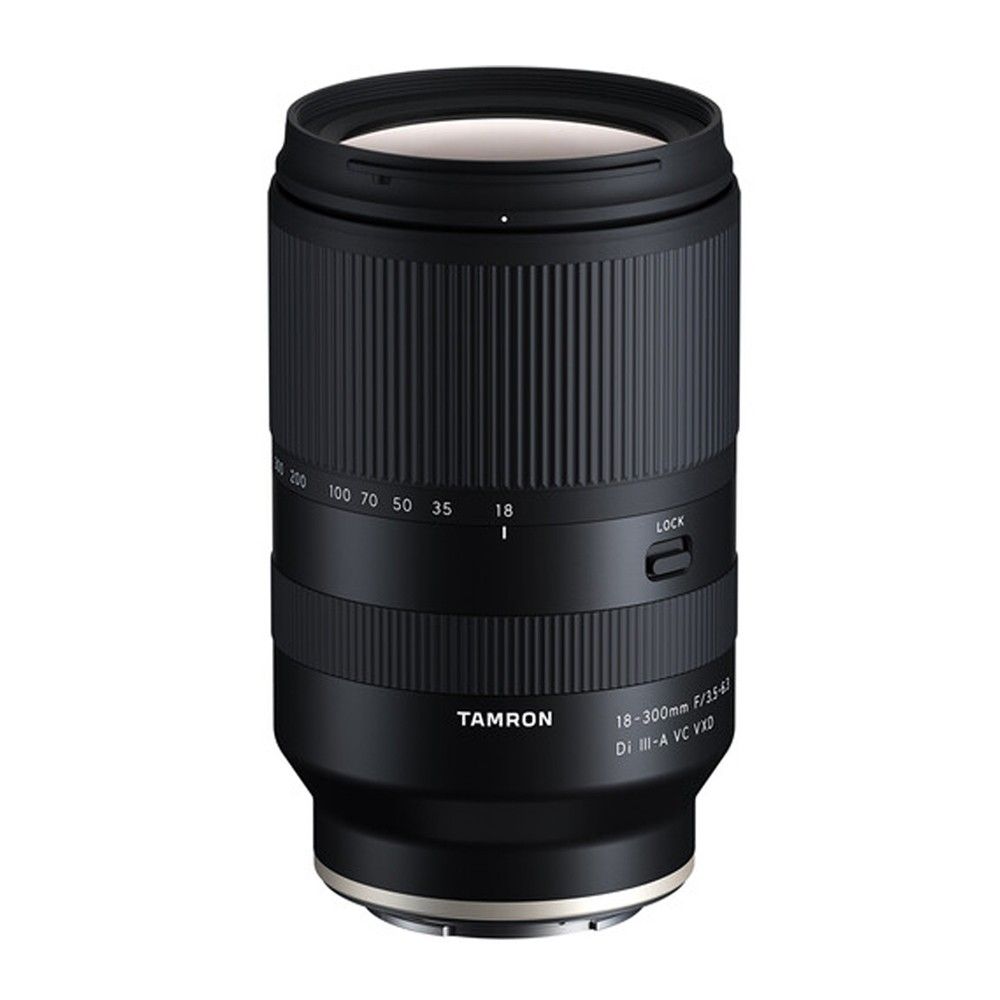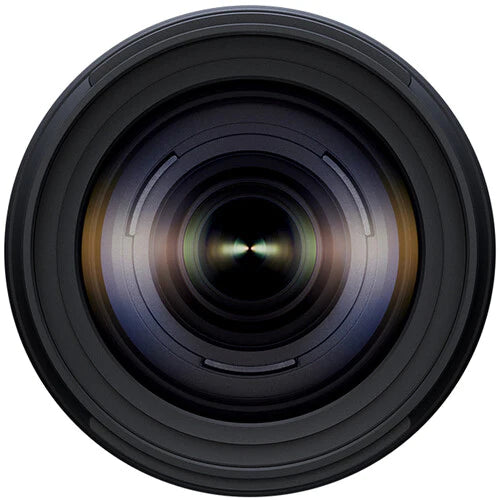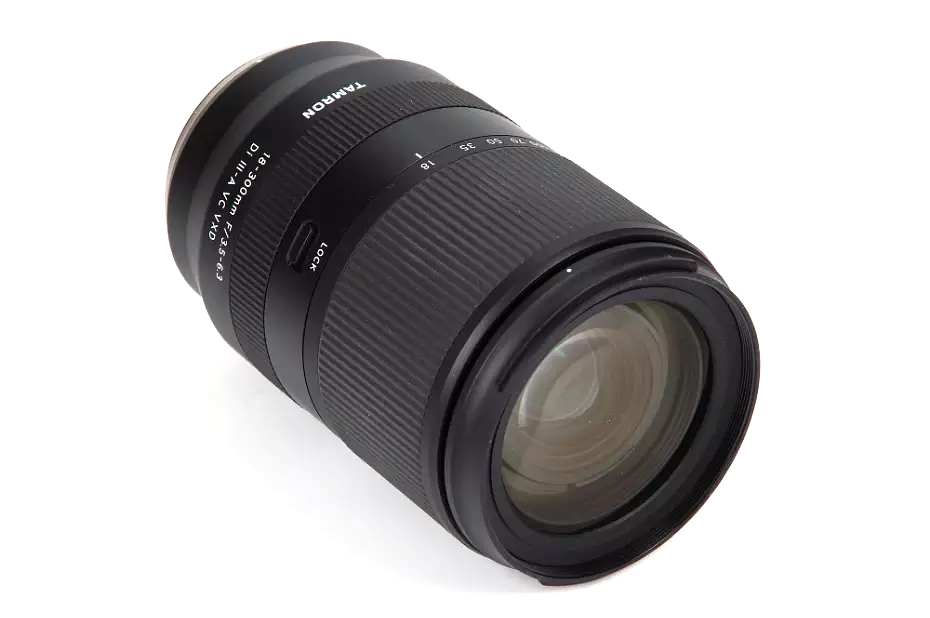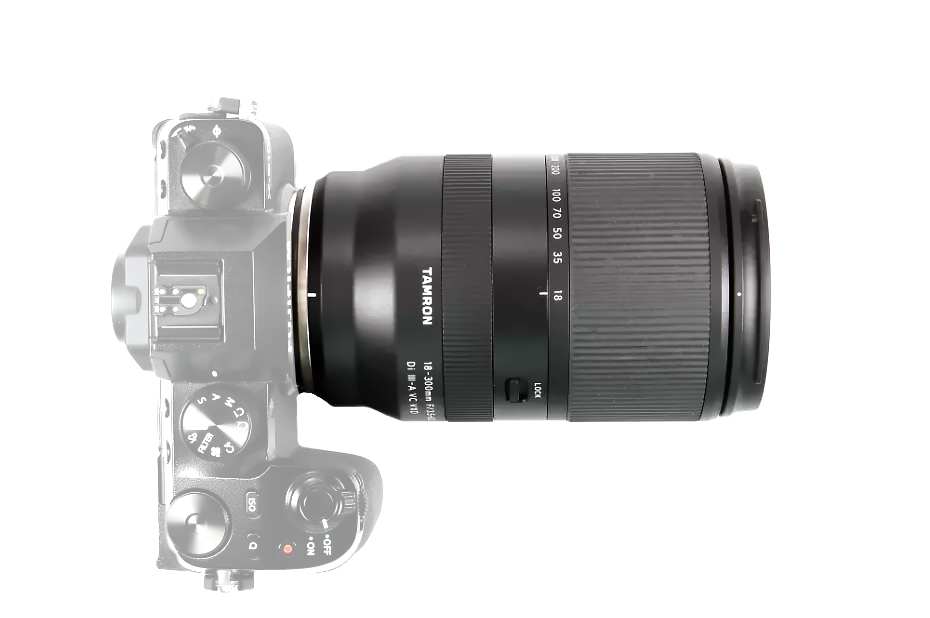Product Description
Tamron 18-300mm F/3.5-6.3 Di III-A VC VXD Lens – FujiFilm X Mount
The World’s First 16.6x All-in-One Zoom for APS-C Mirrorless Cameras
The Tamron 18-300mm F/3.5-6.3 Di III-A VC VXD is the ultimate all-in-one zoom lens for Fujifilm X-mount APS-C mirrorless cameras, offering an unprecedented 16.6x zoom range. With a full-frame equivalent focal length of 27-450mm, this versatile lens covers everything from wide-angle landscapes to ultra-telephoto wildlife shots, making it perfect for travel, everyday photography, and macro work.

Designed for sharpness, speed, and convenience, it features VXD autofocus, powerful image stabilisation (VC), and exceptional optical quality. Whether capturing distant subjects, fast-moving action, or intricate close-ups, this lens is built to deliver stunning images in any scenario.
Key Features & Benefits
Unmatched 16.6x Zoom Range for Ultimate Versatility
- Covers wide-angle (18mm) to ultra-telephoto (300mm), making it ideal for landscapes, portraits, wildlife, and sports photography.
- Compact and lightweight design makes it the perfect travel companion.

Best-in-Class Autofocus with VXD Technology
- VXD (Voice-coil eXtreme-torque Drive) Linear Motor – Provides exceptionally fast, accurate, and silent autofocus, ensuring pinpoint focus on moving subjects.
- Ideal for wildlife, aviation, sports, and video shooting thanks to smooth, near-silent operation.

Outstanding Close-Up Capabilities – Macro Performance at 18mm
- Minimum Object Distance (MOD) of 0.15m (5.9 inches) at the wide-angle end for stunning close-ups.
- 1:2 maximum magnification ratio delivers beautifully detailed macro shots with dreamy background blur.

Superior Optical Quality – Sharp from Centre to Edge
- Three Hybrid Aspherical Elements – Ensure edge-to-edge sharpness and reduced distortions.
- Four Low Dispersion (LD) Glass Elements – Minimise chromatic aberrations for high-contrast, colour-accurate images.

Advanced Vibration Compensation (VC) for Sharp Handheld Shots
- Tamron’s VC Technology reduces camera shake, delivering crisp images in low-light conditions.
- AI-powered stabilisation enhances performance for video shooting at focal lengths of 70mm or less.
Compact, Lightweight & Travel-Friendly
- Length: 126mm | Weight: 620g – One of the most portable superzoom lenses available.
- Perfect all-in-one lens for everyday photography, travel, and outdoor adventures.

Rugged Build for All-Weather Shooting
- Moisture-Resistant Construction – Protects against dust and moisture for reliable performance in tough conditions.
- Fluorine Coating – Repels water, oil, and dirt, ensuring the front element stays clean.
- Zoom Lock Mechanism – Prevents the lens from accidentally extending while carrying or travelling.
Why Choose the Tamron 18-300mm F/3.5-6.3 VC VXD?
✔ Unrivalled 16.6x Zoom Range – Covers every focal length you need in a single lens.
✔ Best-in-Class Autofocus – Fast, precise, and ultra-quiet VXD focusing for both photo and video.
✔ Superb Optical Performance – Delivers high resolution, vivid colours, and minimal aberrations.
✔ Stabilised for Sharp Handheld Shots – VC Image Stabilisation ensures clear images even in low light.
✔ Perfect for Travel & Everyday Photography – Lightweight, compact, and weather-resistant.
Upgrade Your Photography with the Tamron 18-300mm F/3.5-6.3 VC VXD
Whether you're a traveller, content creator, or photography enthusiast, the Tamron 18-300mm F/3.5-6.3 VC VXD is the ultimate do-it-all lens. Capture stunning landscapes, dynamic portraits, distant wildlife, and intricate macro shots—all with a single, high-performance zoom lens.
Payment & Security
Your payment information is processed securely. We do not store credit card details nor have access to your credit card information.

























